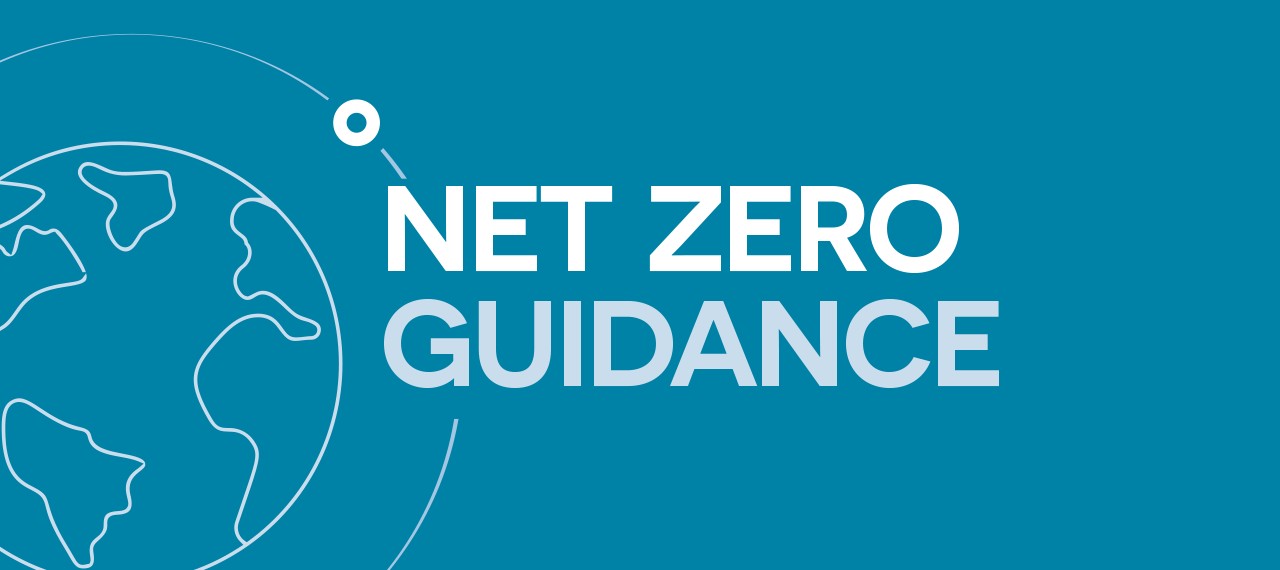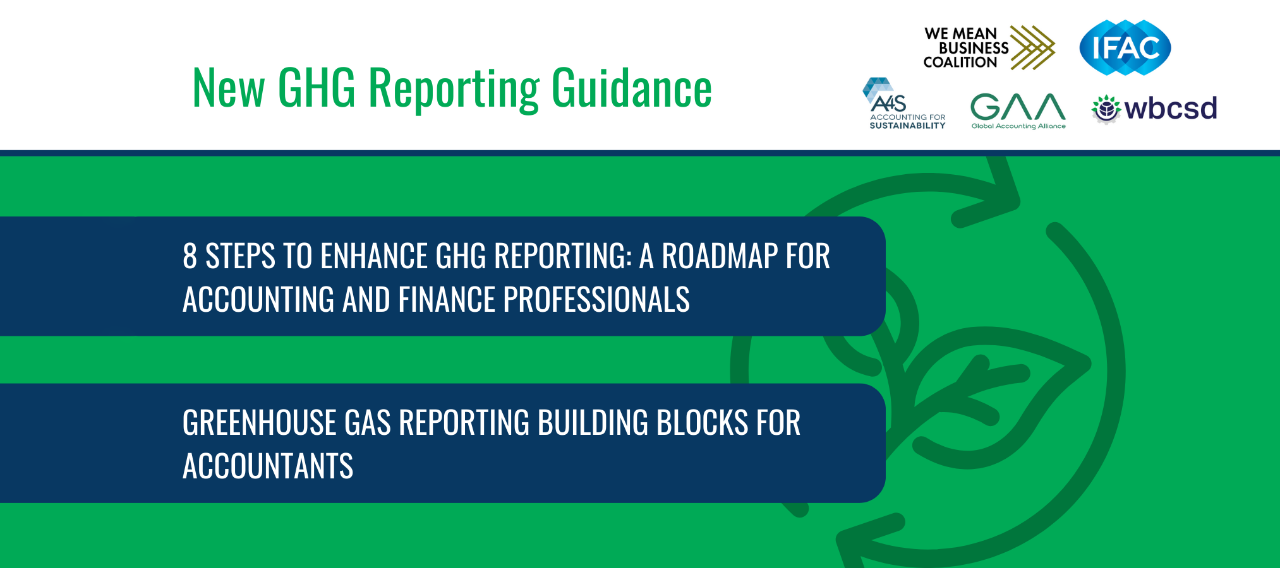Net Zero
BACKGROUND
The whole financial system has a crucial role to play in achieving net zero global greenhouse gas emissions.
CFOs and their finance teams are key to delivering net zero – providing information needed for driving decisions, allocating funds and leading interactions with the capital markets.
The financial services sector also plays a critical role in redirecting finance towards climate-aligned solutions and away from activities that accelerate the climate emergency. With growing numbers of organizations committing to net zero, the conversation has shifted beyond the question of why organizations should aim for net zero greenhouse gas emissions and the focus is now on the practicalities of how to achieve it.
At A4S, we work with finance teams, accounting professionals and the capital markets to create guidance and generate action to help achieve a net zero economy. By doing so, we aim to help finance professionals do their part to prevent a worsening climate crisis, mitigate risks and seize the opportunities presented by the energy transition.
Why is net zero necessary?
The scientific community has clearly stated the need to limit global warming to a maximum of 1.5°C by reaching net zero greenhouse gas emissions by 2050 at the latest.
The Paris Agreement, adopted by 196 parties in 2015, aims to limit global warming to well below 2°C and as close to 1.5°C above preindustrial levels as possible.1 The Glasgow Climate Pact confirmed commitment to the 1.5°C limit.2 To limit global warming to 1.5°C, we need to reach net zero as soon as possible and definitely no later than 2050.3 This means that emissions need to be reduced by at least 43% by 2030 compared to 2019 levels, and by at least 60% by 2035.4
Even at 1.5°C the effects of climate change will pose significant risks to human life and health and to our economies and will result in the irreversible loss of some ecosystems. At 1.5°C “950 million people across the world’s drylands will experience water stress, heat stress and desertification, while the share of the global population exposed to flooding will rise by 24%.”5
At 1.5°C adaptation will be less difficult.6 If the temperature rises to 2°C, there will be profound and irreversible changes to the global environment, resulting in humanitarian crises and considerable economic and financial challenges.7
We are currently a long way off 1.5°C. Based on current climate policy commitments, median global warming at the end of this century is predicted to be 2.7°C above pre-industrial levels.8
What does it mean to be net zero?
Net zero is when emissions and removals of greenhouse gases (GHGs) to the atmosphere are balanced.
Organizations should primarily focus on emissions reduction, with removals as a last resort only for residual emissions.
Definitions
The Science Based Targets initiative (SBTi), the global body enabling organizations to set emissions reduction targets in line with climate science, defines net zero in its Corporate Net-Zero Standard as:
“a) reducing scope 1, 2 and 3 emissions to zero or a residual level consistent with reaching global net-zero emissions or at a sector level in eligible 1.5°C aligned pathways; and
b) permanently neutralizing any residual emissions at the net-zero target year – and any GHG emissions released into the atmosphere thereafter”
The GHG Protocol FAQ defines scope 1, 2 and 3 emissions as follows:
- Scope 1 – “direct emissions from owned or controlled sources”
- Scope 2 – “indirect emissions from the generation of purchased energy” – that is, electricity, steam, heating and cooling used by the reporting company
- Scope 3 – all other indirect emissions that occur in a company’s value chain
What are the current commitments to net zero?
Many countries, corporates and financial institutions are committing to net zero.
In line with the ambitions of the Paris Agreement and the Glasgow Climate Pact, over 150 countries have made a net zero commitment, and some of these commitments are enshrined in law. Net zero commitments are also being made by corporates. Over 975 of the world’s 2,000 largest publicly traded companies have set net zero targets.9
Net zero alliances
There are also a number of alliances that encourage their members to set net zero targets, for example Race To Zero. Through GFANZ, there are also several alliances focused specifically on financial institutions – including the Net-Zero Asset Owner Alliance (NZAOA), Net Zero Asset Managers initiative, Net-Zero Banking Alliance (NZBA), Net Zero Financial Service Providers Alliance (NZFSPA), Net-Zero Insurance Alliance (NZIA), Net Zero Investment Consultants Initiative (NZICI) and Paris Aligned Asset Owners (PAAO).
What are the roles of CFOs and finance teams?
The finance function has a crucial role to play in driving action towards achieving a net zero economy.
Finance professionals can play a pivotal role in achieving net zero in the following ways:
Lead the way
- Identifying the risks and opportunities of pursuing a net zero strategy
- Developing the finance culture to support the transition
- Engaging the board and executive management
- Incentivizing action along the value chain
Transform your decisions
- Developing a net zero pathway to bridge the emissions gap
- Integrating net zero targets into strategic planning and budgeting processes
- Developing integrated management information
Measure what matters
- Integrating natural, social and human capital information
- Measuring and tracking performance
- Reporting progress against the net zero pathway
- Embedding into business valuations
Access finance
- Engaging with investors on net zero
- Raising and allocating funds for transition and adaptation
- Managing external reporting and disclosure
Further information on each of these areas can be found in our A4S net zero guidance for finance teams in the real economy and in banks. Relevant information is also included in the Essential Guide to Debt Finance and Top Tips for Treasury Teams on Developing and Implementing a Sustainable Finance Framework.
What is the role of the investor community?
With trillions invested worldwide, the investor community plays a crucial role in determining whether a net zero economy can be achieved.
The financial sector's net zero alliances, listed above, can be sources of support and guidance for investors as they pursue these actions.
Investors can make a difference by:
- Measuring greenhouse gas emissions in their portfolio and acting now to reduce these emissions
- Being a catalyst for innovation, opportunity and dynamism
- Embracing their role as an essential actor in achieving a sustainable economy
- Recognizing and driving capital towards the best ideas and enterprises for reaching net zero
- Financing the transition to a net zero global economy by supporting companies who are aligned and aligning with emissions reductions
- Engaging actively with high-emitting companies in their portfolio, using their influence to help companies reduce emissions and support the transition
A4S works with financial institutions to build up the evidence base for net zero and to develop practical examples of steps investors can take. We have produced financed emissions top tips and A4S net zero guidance for finance teams of banks.
Our net zero work
A4S works with CFOs and investors and their respective finance teams to explore the practical steps that they can take to make progress towards net zero emissions.
A4S has a number of resources available for finance teams on the topic of operationalizing net zero, including the following:
USEFUL RESOURCES
References
1 The Paris Agreement, United Nations
2 The Glasgow Climate Pact – Key Outcomes from COP26 | UNFCCC, 2021
3 What does net zero actually mean?, Race to Zero, UN Framework Convention on Climate Change, 2021
4 The evidence is clear: the time for action is now. We can halve emissions by 2030, Intergovernmental Panel on Climate Change, 2022
5 10 Big Findings from the 2023 IPCC Report on Climate Change, World Resources Institute, 2023
6 Special Report: Global Warming of 1.5°C – Summary for Policymakers, Intergovernmental Panel on Climate Change, 2018
7 IPCC report: ‘Code red’ for human driven global heating, warns UN chief, UN News, 2021
8 Temperatures, Climate Action Tracker, 2022
9 Net Zero Tracker data set on net zero targets, Net Zero Tracker
















